Benefits of Using a 5 Panel Urine Drug Test
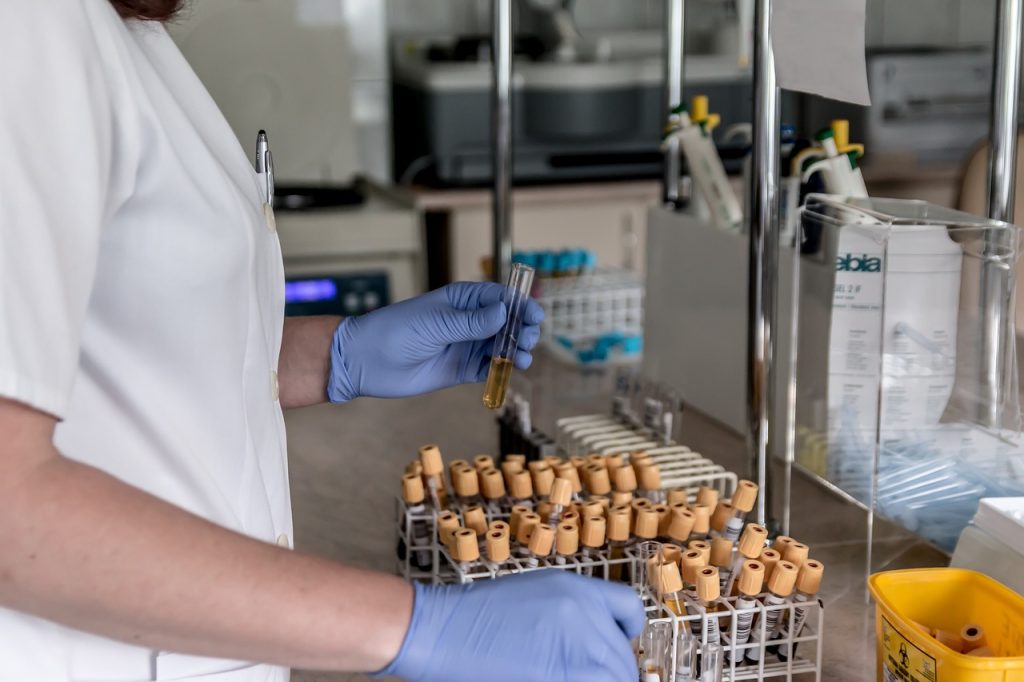
Introduction and Overview of the 5 Panel Urine Drug Test
Drug testing is a critical practice in numerous contexts, ranging from workplace safety and employment screening to legal and medical purposes. Among the various methods of drug testing, the 5 panel urine drug test is one of the most commonly used and trusted by employers, law enforcement, and healthcare providers. Its effectiveness, affordability, and simplicity make it the go-to option for detecting drug use in individuals. In this section, we will provide an in-depth overview of the 5-panel urine drug test, covering its definition, uses, and the five substances commonly screened, as well as its role in employment, legal, and medical settings.
What is a 5 Panel Urine Drug Test?
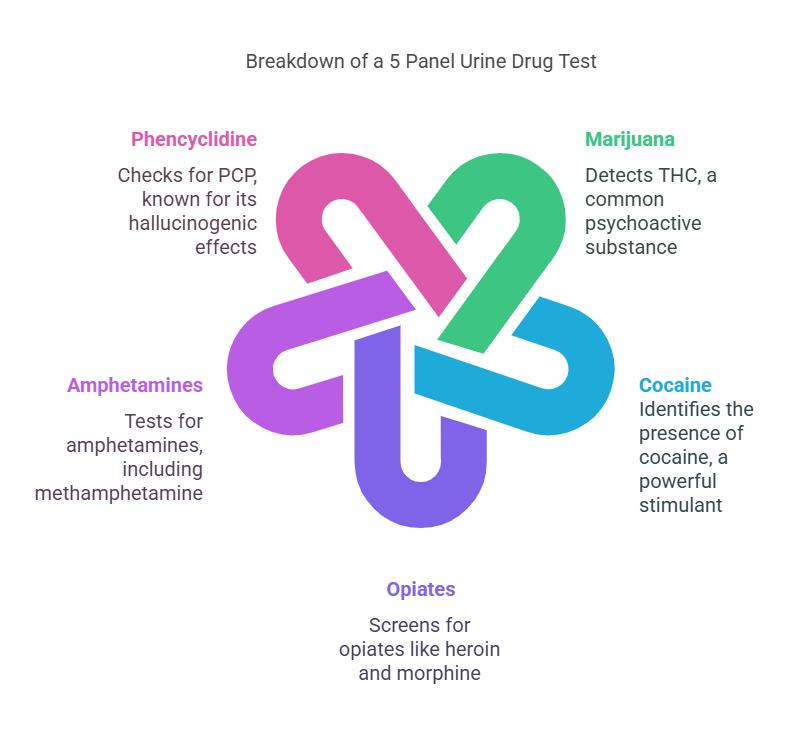
The 5 panel urine drug test is a standardized method used to detect the presence of five specific drugs or their metabolites in a person’s urine sample. It is a form of drug screening used to help employers, healthcare providers, and legal authorities assess whether an individual has recently used certain substances.
The five drugs typically screened for in this test include:
- Marijuana (THC)
- Cocaine
- Opiates (e.g., heroin, morphine, codeine)
- Amphetamines (e.g., methamphetamine, Adderall)
- Phencyclidine (PCP)
These substances are included because they are among the most commonly abused drugs and can impair a person’s judgment, cognitive abilities, and physical coordination. For safety-sensitive jobs or situations where individuals are expected to remain drug-free, the 5-panel urine drug test serves as an effective and efficient screening tool.
Why is the 5 Panel Urine Drug Test Widely Used?
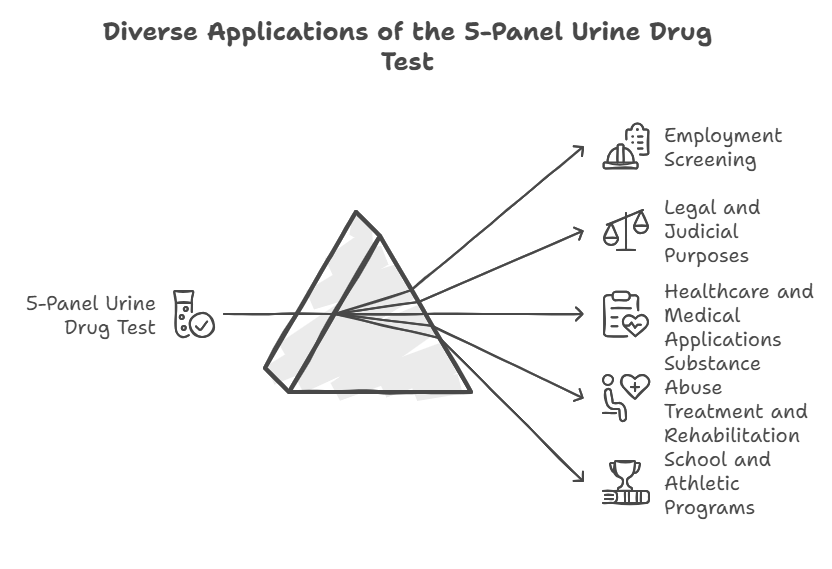
The 5 panel urine drug test has earned its reputation as a widely accepted standard for drug screening, primarily due to its ability to detect the most commonly abused substances. It’s a cost-effective and non-invasive test that produces quick and reliable results. Here’s why it is so frequently used:
1. Employment Screening
The most common use of the 5-panel urine drug test is for pre-employment drug screening. Employers often require drug testing as a condition of employment, particularly in industries where safety is a primary concern. For example, jobs involving operating heavy machinery, driving commercial vehicles, or handling hazardous materials require drug-free workers to reduce the risk of accidents and maintain high safety standards. The 5-panel urine drug test is simple, cost-effective, and widely accepted as a standard method for identifying drug use in potential employees.
Additionally, many employers use random drug tests, post-accident testing, or periodic testing during the course of employment to ensure their workforce remains drug-free. This helps maintain productivity and a safe working environment.
2. Legal and Judicial Purposes
The 5-panel urine drug test is also frequently used in the legal system. Courts may order drug testing as part of probation requirements, child custody cases, or for individuals involved in legal disputes. The results from a 5-panel urine drug test can have significant legal implications, and its accuracy and reliability make it a favored method for providing objective evidence regarding a person’s drug use.
In cases such as probation or parole, individuals may be required to undergo drug testing regularly to demonstrate compliance with their legal obligations. These tests are also crucial in substance abuse rehabilitation programs, where individuals’ recovery progress is monitored through routine urine drug screenings.
3. Healthcare and Medical Applications
In healthcare settings, the 5-panel urine drug test is often used to monitor patients undergoing substance abuse treatment or to assess whether an individual is using certain substances that could interfere with medical treatment. It can also be used for pain management patients to ensure they are following prescribed medications and not abusing controlled substances.
Healthcare providers may also use the 5-panel urine drug test to assess patients for medication adherence, particularly when dealing with high-risk medications, such as opioids. In some cases, doctors may request a urine test to rule out the use of illegal drugs or verify that a patient has not mixed prescribed medications with illicit substances, which could lead to harmful drug interactions.
4. Substance Abuse Treatment and Rehabilitation
The 5-panel urine drug test is frequently used in substance abuse treatment and rehabilitation programs to monitor progress and determine whether a patient has relapsed or is adhering to their treatment plan. Urine tests are a convenient, non-invasive way to assess drug use, and they can be performed routinely during outpatient treatment or while a patient is in a detoxification program. This helps treatment centers track a patient’s recovery and offers immediate feedback to both patients and counselors about the effectiveness of the treatment plan.
5. School and Athletic Programs
Educational institutions and sports organizations may also require the 5-panel urine drug test as part of their screening process. Schools, especially at the high school and collegiate levels, use drug testing to promote a drug-free environment and ensure that students comply with their code of conduct. Likewise, athletic organizations use drug testing to maintain fair play, as well as to ensure the health and safety of athletes. Testing for substances such as marijuana, cocaine, or performance-enhancing drugs is common to ensure athletes comply with regulations that promote safety and fairness in sports.
What Drugs are Tested for in the 5 Panel Urine Drug Test?
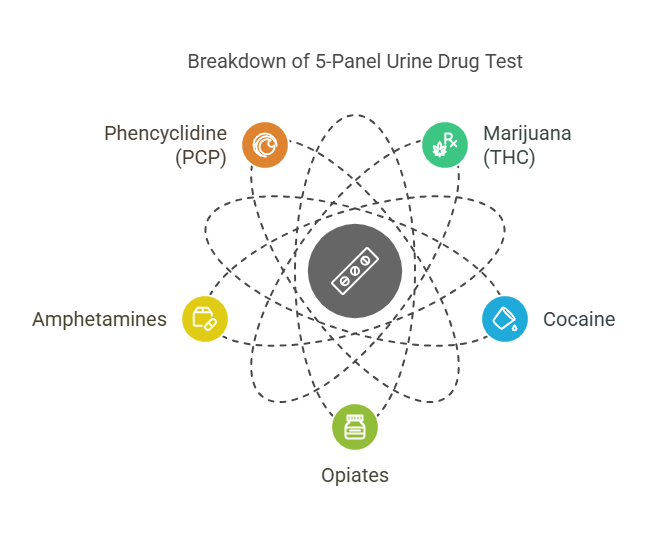
The 5-panel urine drug test specifically screens for five categories of drugs that are commonly abused and can impair an individual’s ability to perform tasks safely and effectively. The five substances are:
1. Marijuana (THC)
- Common Use: Recreational, medicinal.
- Risks: Impaired judgment, coordination, and memory. Potential to increase accident rates in the workplace, especially in safety-sensitive environments.
- Detection Window: Up to 30 days, depending on frequency of use and the individual’s metabolism.
2. Cocaine
- Common Use: Recreational stimulant.
- Risks: Increased risk of erratic behavior, heart complications, and impaired cognitive function.
- Detection Window: 2-4 days after use.
3. Opiates
- Common Use: Prescription painkillers (e.g., morphine, codeine), heroin.
- Risks: Addiction, overdose, impaired physical and mental performance.
- Detection Window: 2-3 days, but can vary depending on the drug.
4. Amphetamines
- Common Use: ADHD medication (e.g., Adderall), methamphetamine (street drug).
- Risks: Increased heart rate, anxiety, paranoia, and sleep disturbances. Can be abused recreationally or to increase alertness.
- Detection Window: 1-3 days after use.
5. Phencyclidine (PCP)
- Common Use: Hallucinogenic drug with dissociative effects.
- Risks: Severe behavior changes, hallucinations, and physical impairment.
- Detection Window: 7-14 days, depending on usage.
Why is the 5 Panel Drug Test Considered Standard?
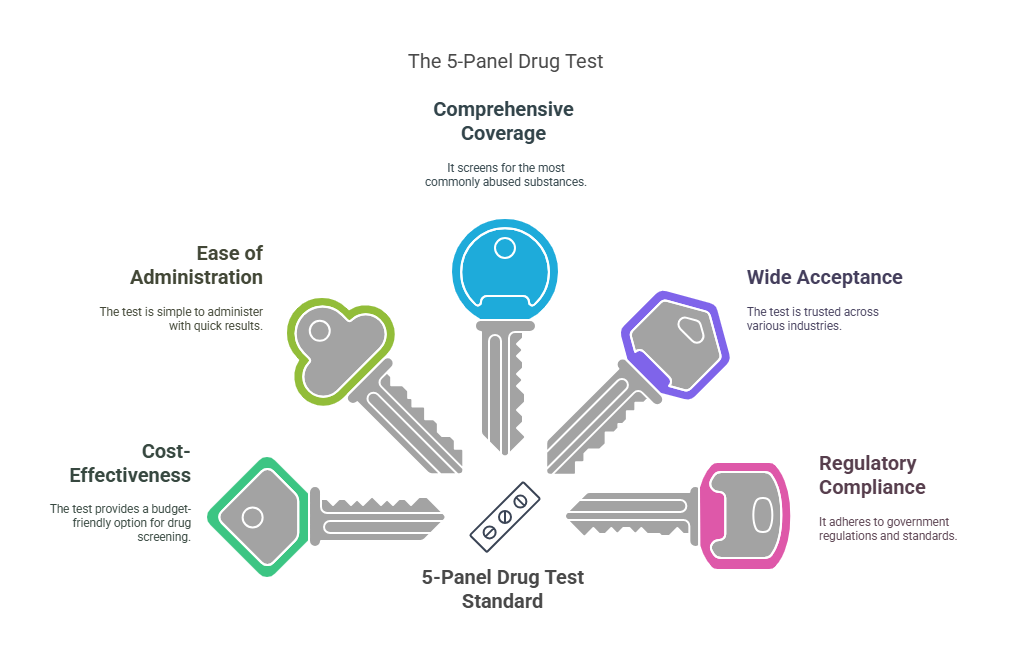
The 5-panel urine drug test is recognized as the standard for drug screening due to several factors:
- Cost-Effective: The 5-panel drug test is affordable for employers, government agencies, and healthcare providers. It offers a reliable way to test for common drugs at a lower price point than more extensive panels.
- Quick and Easy: The urine test is relatively easy to administer and results can often be obtained within a short period, making it ideal for situations that require rapid testing, such as pre-employment screenings or random drug tests.
- Comprehensive Coverage: While the 5-panel test may not screen for all possible substances, it covers the five most commonly abused drugs. This makes it effective in identifying individuals who are at high risk of impairment due to substance use.
- Widely Accepted: The test meets federal standards and is trusted in industries that require drug-free workplace policies, such as transportation, healthcare, and construction.
- Regulatory Compliance: The 5-panel test aligns with regulations set forth by government agencies like the Department of Transportation (DOT), making it a go-to method for testing in regulated industries.
How the 5 Panel Urine Drug Test Works, Benefits, and Our Services
The 5-panel urine drug test is a simple and efficient method used to detect the presence of drugs in an individual’s urine. It plays a critical role in ensuring safety and compliance in a wide range of industries, including employment, legal settings, healthcare, and more. This section will walk you through the process of how a 5-panel urine drug test is conducted, the benefits it provides to both employers and individuals, and how Exact Background Checks offers comprehensive drug screening services tailored to meet diverse needs.
How Does the 5 Panel Urine Drug Test Work?
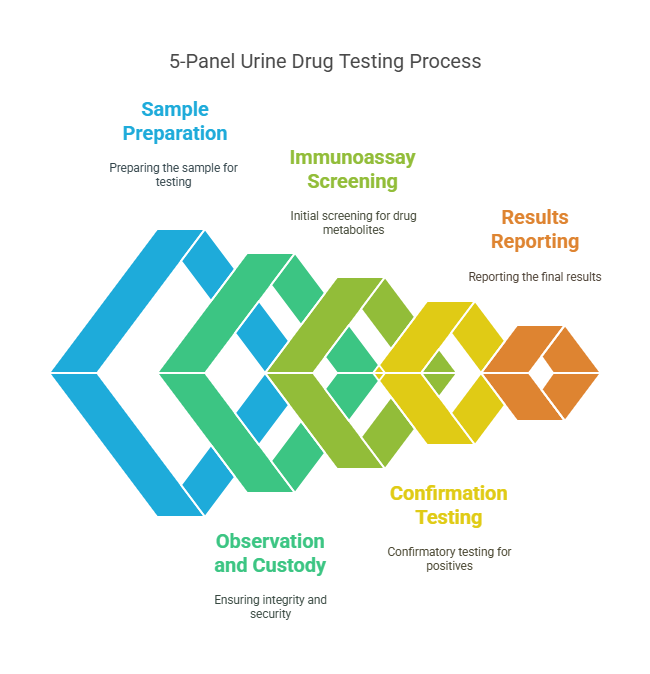
The 5-panel urine drug test is a non-invasive and straightforward procedure. It involves collecting a urine sample from the individual being tested, which is then analyzed in a laboratory to detect traces of five commonly abused drugs. Here’s a step-by-step breakdown of the process:
Step 1: Collection of the Urine Sample
The first step in the 5-panel urine drug testing process is the collection of the urine sample. This is typically done in a controlled environment, such as a laboratory, medical facility, or an authorized collection site, to ensure that the process is handled professionally and with privacy.
- Preparation: The individual being tested may be asked to empty their bladder before providing the sample. They are usually given a clean container to collect the urine.
- Observation: Depending on the setting (e.g., workplace, legal requirements), a witness or observer may be present to ensure the sample is provided correctly and without tampering. This is particularly important for high-stakes situations, such as employment testing or probation compliance.
- Chain of Custody: A crucial part of the testing process is maintaining a proper chain of custody. This ensures that the urine sample is handled and transported in such a way that its integrity is not compromised.
Step 2: Laboratory Analysis
Once the urine sample is collected, it is sent to a certified laboratory for analysis. The lab performs several tests on the sample to determine whether any of the five drugs are present.
- Immunoassay Screening: The initial test used to screen the urine is known as an immunoassay. This method uses specific antibodies to detect the presence of drug metabolites in the sample. If the immunoassay test results are negative, the process stops here.
- Confirmation Testing: If the immunoassay results are positive for one or more substances, a confirmation test is performed using a technique called gas chromatography-mass spectrometry (GC-MS) or liquid chromatography-mass spectrometry (LC-MS). This method is more precise and is used to confirm the presence of specific substances.
Step 3: Results Reporting
Once the analysis is completed, the lab prepares the results and provides them to the entity that requested the test (e.g., an employer, healthcare provider, or legal authority). The results can fall into one of three categories:
- Negative: No traces of the five drugs tested for were found in the sample.
- Positive: The urine sample contains detectable amounts of one or more of the five drugs tested for. In this case, further investigation or medical review may be needed.
- Inconclusive: The test results were unclear, and the sample may need to be retested. This can happen due to contamination, insufficient sample volume, or issues with the testing equipment.
Results are typically reported within 24 to 72 hours, depending on the testing facility and whether additional confirmation testing is needed.
Benefits of the 5 Panel Urine Drug Test
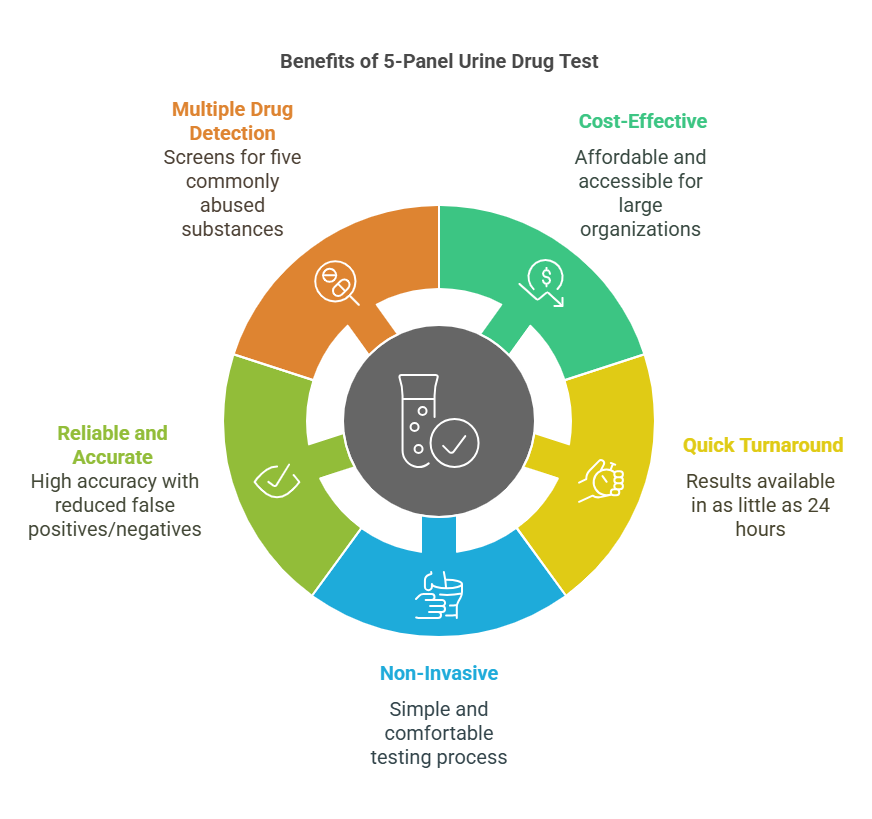
The 5-panel urine drug test offers numerous advantages, making it the preferred choice for many employers, healthcare providers, and legal authorities. Here are some of the key benefits:
1. Cost-Effective and Accessible
The 5-panel urine drug test is affordable compared to other types of drug testing, such as blood or hair follicle tests. This makes it an ideal option for large organizations or industries with many employees, where regular or random drug testing is necessary to maintain safety and compliance.
Since the test uses readily available materials and standardized testing procedures, it is accessible across a wide range of sectors, including employment, substance abuse treatment, and legal contexts.
2. Quick Turnaround Time
One of the most significant advantages of the 5-panel urine drug test is its quick turnaround time. Results can be processed and returned in as little as 24 hours. This is particularly useful for employers conducting pre-employment drug screening, where timely results are crucial for making hiring decisions.
The test is also efficient in environments requiring rapid drug screening, such as healthcare settings, where a fast result can directly influence patient care and treatment options.
3. Non-Invasive and Easy to Administer
Unlike blood or hair follicle testing, which may require specialized professionals or equipment, the urine drug test is simple to administer and non-invasive. It does not require any medical procedures or equipment, making it easy to conduct in various settings such as clinics, offices, or even in mobile testing units.
This simplicity also contributes to the low cost of the test and makes it more comfortable for individuals undergoing testing. Furthermore, the test can be performed in private settings, ensuring confidentiality and reducing any discomfort for the person being tested.
4. Reliable and Accurate
The 5-panel urine drug test is known for its accuracy. The initial immunoassay screening is highly effective at detecting the target drugs, and the confirmation tests provide an extra layer of certainty. With the combination of these two testing methods, the results of the test are highly reliable, reducing the chances of false positives or false negatives.
As a result, the test provides employers, healthcare providers, and legal authorities with confidence in the accuracy of their drug screening efforts.
5. Detection of Multiple Drugs
The 5-panel urine drug test screens for five different substances, which makes it an efficient tool for detecting a wide range of commonly abused drugs. This broad detection capability allows employers and organizations to address a variety of potential issues, such as impaired performance due to drug use, without needing to conduct multiple, separate tests.
By covering five of the most commonly abused substances—marijuana, cocaine, opiates, amphetamines, and PCP—the test provides a comprehensive assessment of an individual’s drug use history.
Exact Background Checks: Reliable and Professional Drug Testing Services
At Exact Background Checks, we specialize in providing thorough and reliable drug testing services for a variety of needs, including pre-employment screenings, random drug tests, post-accident testing, and more. Our 5-panel urine drug tests are administered in compliance with all relevant regulations, including the Fair Credit Reporting Act (FCRA) and Department of Transportation (DOT) standards where applicable.
Why Choose Exact Background Checks for Your Drug Testing Needs?
- Certified and Accredited Testing Facilities: We partner with accredited laboratories to ensure that all drug tests are conducted in compliance with industry standards, providing you with accurate and legally defensible results.
- Fast Results: Our testing services are designed to provide fast results, typically within 24 to 72 hours, to help you make timely decisions, whether for employment, legal, or medical purposes.
- Confidentiality and Compliance: We ensure that all tests are conducted in a confidential manner, with results shared only with the authorized parties, in accordance with applicable privacy laws. We also ensure compliance with federal, state, and local regulations governing drug testing.
- Flexible Testing Solutions: Whether you need drug testing for a single employee or a large workforce, we offer customized solutions to meet your unique needs. Our services also include random drug testing and post-accident drug testing for a variety of workplace settings.
- Expert Support and Guidance: Our team of experts is available to guide you through the entire drug testing process, from administering tests to interpreting results and understanding legal implications.
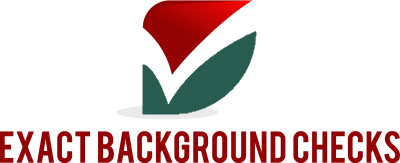



The 5-panel urine drug test is a widely used, cost-effective method for detecting common drugs like marijuana, cocaine, and opioids.